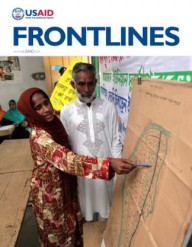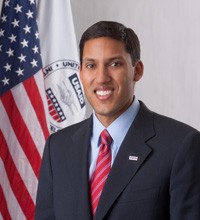Just over one year ago, the worst drought in six decades brought 13.3 million people to the brink of hunger and starvation across the Horn of Africa. As the suffering mounted, the United States joined its partners to mobilize a large-scale humanitarian response to save lives as quickly as possible. But because the crisis occurred on a scale so difficult to comprehend and so far away, we didn’t see the public come together to respond in the same way they did after the earthquake in Haiti.
So we decided to try something new and launched a public awareness campaign. It was our attempt to make the world smaller, connecting people with clear knowledge and understanding of exactly what was happening in the Horn and providing them with a powerful way to respond. The campaign included interactive maps with real-time information, tool kits and public service announcements with some familiar faces, like Josh Hartnett, Uma Thurman and Geena Davis.
The campaign also represented something else: a turning point in decades of work responding to humanitarian crises around the world. Instead of just encouraging the public to help in a crisis, we also introduced them to Feed the Future, President Barack Obama’s initiative to strengthen food security and enable long-term solutions to hunger and malnutrition.
In addition to sharing the heroic work of our humanitarian teams in the field, we also shared new development breakthroughs that can put millions on the path out of poverty. These breakthroughs include crop seeds that can resist climate change, lift tens of millions of people out of poverty and save several billion cubic meters of water annually; innovative microinsurance packages for pastoralists to cover them against loss of their livestock in a lean season; and advances in nutrition, including vitamin A-rich orange fleshed sweet potatoes to protect children against diseases.
Now, instead of just talking about how the crisis in the Horn shouldn’t ever happen again, we are taking real and meaningful steps to ensure it won’t.
We know we cannot prevent droughts or floods, but we can work much harder and more strategically to ensure these shocks don’t devastate families or set back hard-won development gains. That is the goal behind our Agency’s new emphasis on resilience—to change the basic concept of humanitarian assistance so that even as we save lives, we help communities move out of a state of chronic vulnerability.
Last month, we released our first-ever Policy and Program Guidance on Building Resilience to Recurrent Crisis [pdf 827kb], which draws from decades of experience responding to humanitarian crises and outlines concrete steps to turn our aspirations for resilience into real results. For example, instead of sending in different types of teams to complete separate analyses and draw up separate plans, we’ve forged one unit—called a Joint Planning Cell—to maximize our impact by integrating humanitarian and development efforts [pdf 124kb]. Instead of just reporting on how many people we’re reaching with humanitarian assistance, we’re also reporting on how many people we’ve helped stay in their communities. For example, in the Horn, we have set the goal of ensuring that 1 million will no longer need emergency assistance in the next crisis because of our work in resilience.
Ultimately, with this new emphasis, we seek to save and improve lives while reducing the need for repeated infusions of humanitarian assistance. It won’t be easy, but it will help us make the difference between enduring vulnerability and thriving human dignity.










Comment
Make a general inquiry or suggest an improvement.